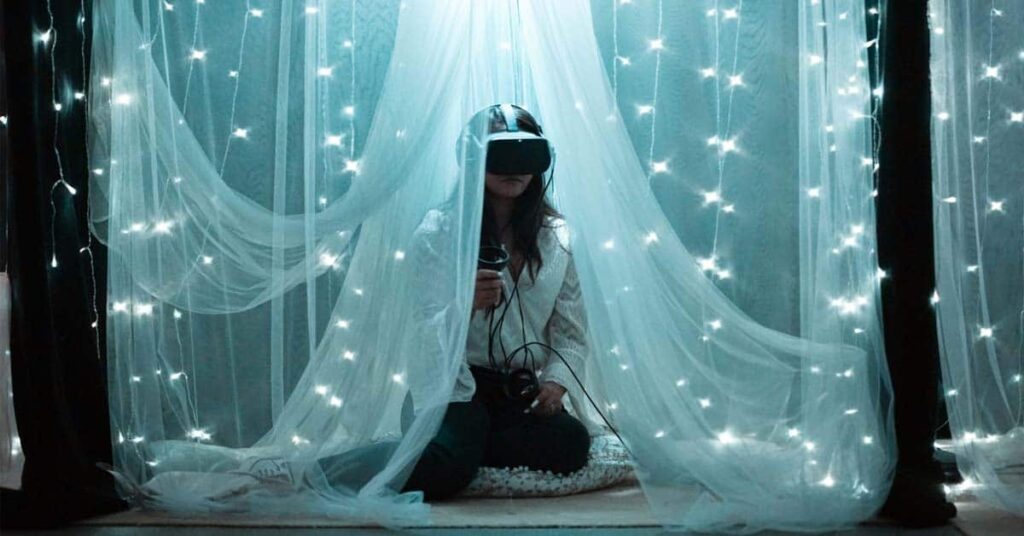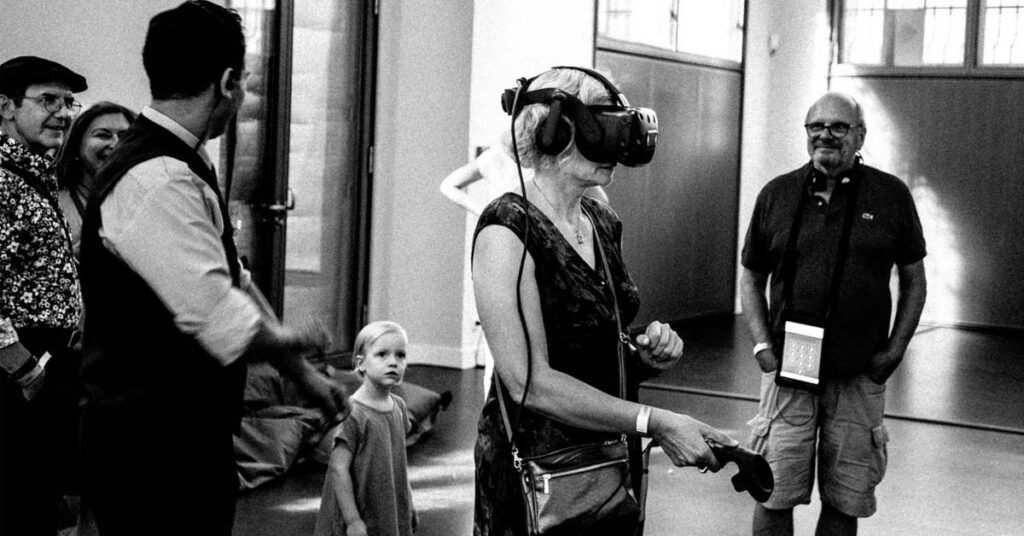Virtual reality is constantly growing. The fields of its application are growing every day and touch more and more different worlds. The latest advances around this new technology particularly concern the therapeutic field. More precisely, advances are focused on therapies aimed at treating certain psychological disorders.
The use of a virtual reality headset as an aid in therapeutic treatments is becoming more and more common. The results of the experiments carried out are regularly very conclusive and encourage further use of this technology. However, virtual reality must be considered as a tool in order to find the right path to the most suitable solution.
But how can virtual reality help in concrete terms? This is what we will explain to you through different examples: meditation, phobias and Alzheimer's disease.
Meditate under a virtual reality headset.

Sit comfortably, put a virtual reality headset on your head and indulge in meditation. This is an activity now offered by many wellness centers .
Transported into a calming landscape, users can concentrate entirely on what they see. They focus their attention on particular points to indulge in meditation. An experience that can also be accompanied by breathing exercises. Using an application, or with the help of a professional, meditation via virtual reality shows its effectiveness.
Accustomed to meditation, like newbies, many users recommend this use of virtual reality to give another dimension to their meditative experience. In addition, the benefits observed are numerous : improvement in the nature of sleep , improvement in mental health , improvement in emotional balance or even reduction in sensitivity to stress.
Eye movement comes to virtual reality.
Eye movement refers to desensitization and reprocessing therapy.
The patient receives alternating stimulation (right and left), via auditory, visual and digital stimuli. It reacts to these stimulations with eye movements. This therapy is used in particular in the treatment of post-traumatic after-effects. The High Authority of Health, since June 2007, has recommended its use for post-traumatic stress disorder, as well as for the pathologies resulting from it (depression, risk of suicide, dependence on drugs or alcohol, etc.). Along with hypnosis , eye movement is a new area of exploitation of virtual reality for therapeutic purposes.
Treating your phobias using virtual reality is possible.
A form of is called a phobia . The phobic person realizes that their fear is excessive and irrational, but they cannot resist the urge to avoid the object of their fear. Which can sometimes be disabling.
Thus, during behavioral and cognitive therapies , virtual reality can be an extremely valuable tool. The virtual reality headset allows the patient to both recreate the object of their phobia and to feel safe. All in total immersion.
Working alongside a professional, the progressive use of technology can lead, little by little, to better management of your phobia. Virtual reality therapies have shown their effectiveness in the treatment of arachnophobia.
Researchers from the University of Basel , Switzerland, showed that between two groups of patients treated for this phobia, the group who had therapeutic treatment using virtual reality obtained better results. Unlike the second group, the one who used the helmets can now approach a spider in a transparent box.
Virtual reality against Alzheimer's.

Since 2020, the Nice hospital center has been testing the use of virtual reality headsets to fight Alzheimer's disease. Patients suffering from mild or moderate disorders and aged over 65 take part in the experiment.
Coming from two EHPADs in the Nice region, the patients are separated into two groups. The first sees, through the headset, neutral images (the city of Nice, the beach, etc.). The second, for its part, receives, via the headset, personalized images associated with an emotion. This type of therapy, called reminiscence therapy , shows encouraging results on patients. By 2022 more patients will join this virtual reality therapy program.
Whether it is meditation, treatment of phobias or Alzheimer's disease, the desire to use virtual reality as a tool is present. More and more researchers are trying experiments to show the effectiveness of this new technology in their therapies.














